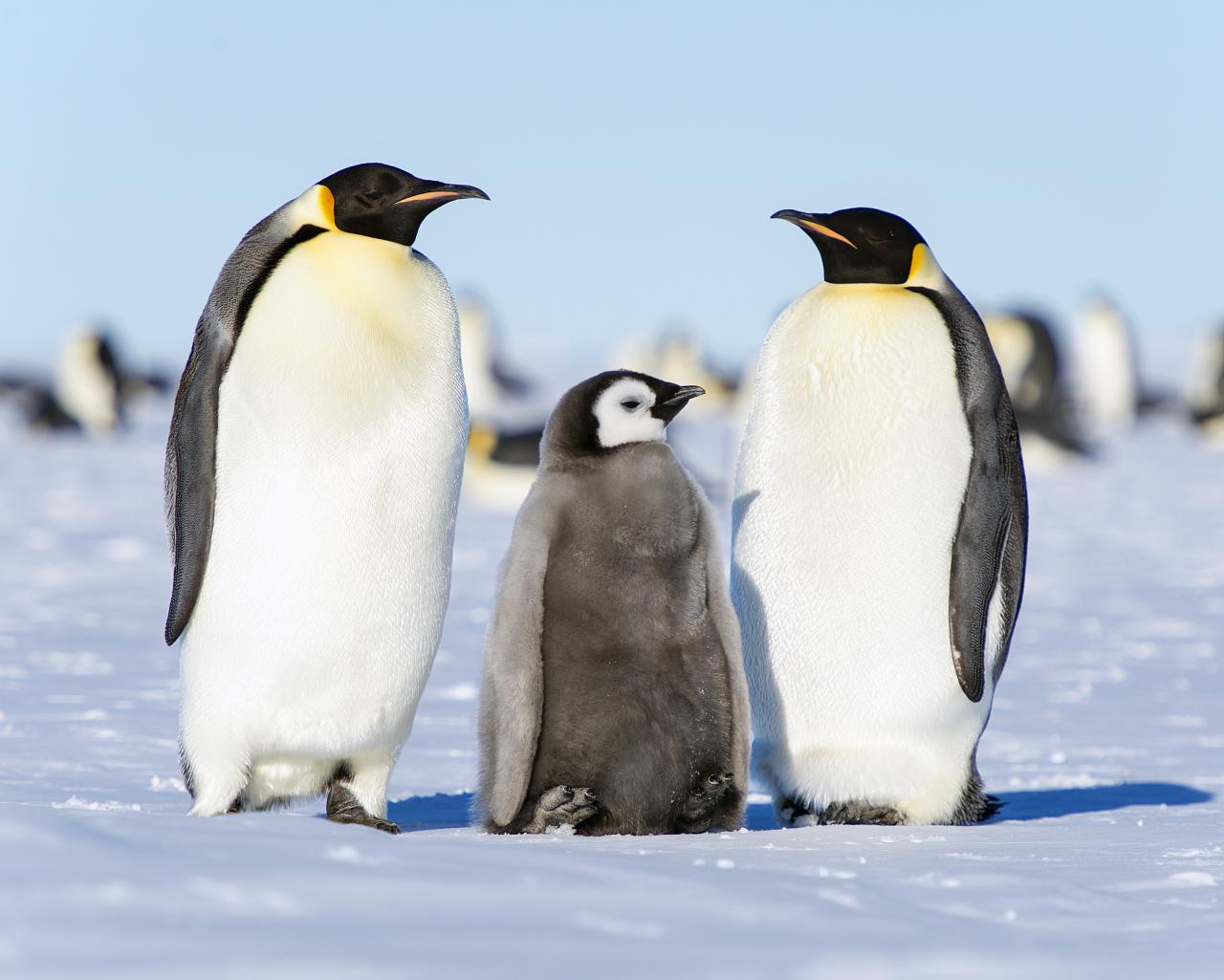- Until recently, the emperor penguin colony at Halley Bay on the Weddell Sea in the Antarctic was one of the world’s largest, supporting between 14,000 to 25,000 breeding pairs, or around 5 to 9 percent of the bird’s global population.
- Since 2016, satellite images have shown that the colony has suffered a complete breeding failure, something that’s never been recorded before.
- This breeding failure started in 2016 when, following abnormal stormy weather, the sea ice broke up in October, long before the chicks had fledged and were ready to go out to sea. In 2017 and 2018, the sea ice broke up early too, leading to the likely death of all chicks.
- Around the same time, there was a massive increase in the numbers of emperor penguins at the Dawson-Lambton Glacier penguin colony 55 kilometers (34 miles) south of Halley Bay, suggesting that many of the emperor penguins from Halley Bay had moved to Dawson-Lambton.
Antarctica’s second-largest colony of emperor penguins has likely not produced any chicks over the last three years, a new study has found.
Until recently, the emperor penguin colony at Halley Bay on the Weddell Sea supported between 14,000 and 25,000 breeding pairs, or around 5 to 9 percent of the bird’s population in the world. There have been fluctuations in the size of the colony over the past decades, according to researchers from the British Antarctic Survey, who have been visiting and surveying the area since the 1950s. But since 2016, satellite images have shown that the colony has suffered a complete breeding failure, something that’s never been recorded before.
“We have been tracking the population of this, and other colonies in the region, for the last decade using very high resolution satellite imagery,” Peter Fretwell, a remote-sensing specialist at the British Antarctic Survey and lead author of the study, said in a statement. “These images have clearly shown the catastrophic breeding failure at this site over the last three years. Our specialised satellite image analysis can detect individuals and penguin huddles, so we can estimate the population based on the known density of the groups to give reliable estimate of colony size.”

The emperor penguin (Aptenodytes forsteri) is a unique bird in many ways. It is the largest of all living penguin species and the only one that breeds during the Antarctic winter. It is also the only known bird to never breed on dry land, preferring to raise chicks on frozen sea instead. To ensure the chicks are ready to leave their nesting ground by the summer months of January or February, female emperor penguins lay their single eggs around May, then take turns with their partners to incubate the eggs and subsequently raise the chicks through the extremely cold winter months. During this entire process, the emperor penguins rely on intact sea ice. But in 2016, following abnormal stormy weather, the sea ice broke up in October, long before the chicks had fledged and were ready to go out to sea. In 2017 and 2018, too, the sea ice broke up early, leading to the likely death of all chicks, the researchers found.
“It is impossible to say whether the changes in sea-ice conditions at Halley Bay are specifically related to climate change, but such a complete failure to breed successfully is unprecedented at this site,” said Phil Trathan, a penguin expert at the British Antarctic Survey and co-author of the study.
But it’s not all gloom. Between 2016 and 2018, satellite images picked up a massive increase in the numbers of emperor penguins at the nearby Dawson-Lambton Glacier colony, located 55 kilometers (34 miles) to the south of Halley Bay. Where the estimated number of pairs at Dawson-Lambton had steadily decreased from 3,690 pairs in 2010 to 1,280 pairs in 2015, they jumped to 5,315 in 2016, 11,117 pairs in 2017, and 14,612 pairs in 2018, the authors write in the paper.
“It appears that many of the birds from Halley Bay have relocated to Dawson-Lambton, with the rest remaining at Halley Bay, but not breeding successfully,” the authors add. “This number seems to be diminishing on an annual basis as more failed breeders move to the nearby colony. It is possible that some emperors could have formed a new colony elsewhere.”
Whether the early break-up of sea ice at Halley Bay will continue in the future is unclear. But scientists have predicted that with future warming of the Antarctic and reduced sea ice due to climate change, penguin numbers will decline. And this study gives a sneak peek into how the penguins might respond to such disappearing stable sea ice conditions, the researchers say.
Banner image of emperor penguins via Pixabay.
Citation:
Fretwell, P. T. and Trathan, P. N. (2019). Emperors on thin ice: three years of breeding failure at Halley Bay. Antarctic Science. doi:10.1017/S0954102019000099.
